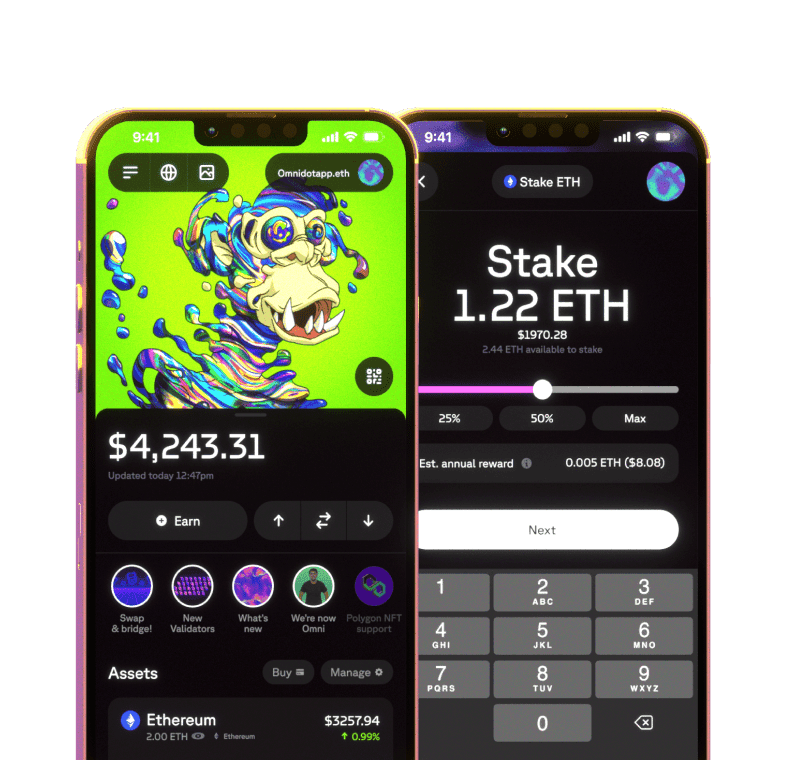Inside Arbitrum's Rise to the Top: The Latest on Ethereum's Hottest L2 Solution
On March 23, 2023, a staggering 1.162 billion $ARB were issued to 625K eligible recipients. This move officially signaled the shift of the Arbitrum protocol to a fully decentralized autonomous organization (DAO) model. Holders of the $ARB governance token now wield the power to steer the protocol's future, marking a major milestone in the history of the protocol.
“Decentralization of Arbitrum’s technology governance represents an important step towards community governance of Ethereum’s scaling technologies, and further aligns the Arbitrum community’s incentives with those of the Ethereum community at large.” - Arbitrum DAO
![[object Object]](https:////images.ctfassets.net/nccdc912q1to/3cRRr4ZiqdYz6dgRcnoV2i/56fc09ae0ed5ca8ec2dd47cf1898d87b/Arbitrum_Token_Distribution.jpeg)
Arbitrum has taken the L2 market by storm, with a stranglehold on over 50% of the market. It's safe to say that Arbitrum is the top L2 solution for Ethereum, evidenced by the market's overwhelming support in pooling the highest TVL amount into the protocol, outstripping major competitors like Optimism and Polygon.
Prior to the airdrop, the Arbitrum community showed optimism about the price changes that would follow the token issuance. Thanks to the hype, Arbitrum achieved new heights and raked in a total of $1.76B in assets in its network. The subsequent rise in asset inflows to Arbitrum demonstrates the persistent enthusiasm in the Web3 space despite the bear market. Perhaps one of the most notable facts about Arbitrum is its devoted community. This is a testament to the confidence in its optimistic rollup technology and its potential for long-term growth.
What is Arbitrum?
Arbitrum is a layer 2 scaling solution that helps solve the congestion problem on Ethereum by using a separate layer to validate transactions. This layer, called "optimistic rollups," allows for faster and cheaper transactions with a higher capacity than Ethereum's main network. Nodes that validate transactions are rewarded with ETH and add blocks to Ethereum's mainnet. This means that Arbitrum can lower network congestion and transaction costs by reducing the workload on Ethereum's main network. Despite being one of many possible solutions to scaling Ethereum, Arbitrum has become one of the top choices for developers and users.
Post airdrop effects
Even with the significant growth that propelled Arbitrum beyond the 5M account milestone, weekly user activity has dropped significantly since the March 20 high of 1.38 million to around 333,000 users, a number more in line with Arbitrum’s pre-airdrop activity. Post-airdrop, over 55% of the accounts dumped their supply fully, with another 26% partially selling away their $ARB (source).
![[object Object]](https:////images.ctfassets.net/nccdc912q1to/5avpCZuGbQx6xqI82YmGGu/7aa01cbfd05eb6f84e3bc36a8386d5dc/Airdrop_supply_behavior.png)
The notable drop in weekly user activity on Arbitrum could be seen as a downside of having such a large airdrop. While the airdrop helped to attract new users and developers to the network, it also attracted many "airdrop harvesters" who were primarily interested in receiving free tokens. As a result, the initial spike in user activity may have been somewhat artificial. However, the airdrop was ultimately aimed at promoting community participation and decentralization through the distribution of governance tokens. So, despite the drop in user activity, the airdrop has still achieved its goal of distributing governance to a wider community and giving them a voice in the future development of the network.
Ironically, Arbitrum's first attempt at decentralized governance, AIP-1, was met with overwhelming criticism for seemingly disregarding the voice of the holders.
The controversy around AIP-1
The first governance proposal on the Arbitrum blockchain caused controversy over the start of April, when it suggested that the Arbitrum Foundation should control 750 million ARB tokens, worth nearly $1 billion, for a special grants program meant to foster growth on Arbitrum. The proposal was ultimately rejected by over 76% of ARB tokens. However, despite the initial appearance that holders would have some influence, they actually did not have a say in how the funds were allocated as the Arbitrum foundation had already extracted the funds beforehand.
Arbitrum then introduced a new proposal, AIP-1.05, suggesting the return of 700 million ARB governance tokens to the DAO Treasury, but this was also turned down by the community.
Still, Arbitrum continues to lead the pack as the preferred L2 network, with the value of $ARB being a reflection of the ecosystem's worth. The value of $ARB is expected to grow as long as the ecosystem flourishes and the development roadmap is promising, which explains why Arbitrum is investing in its dApps. Recently, the foundation allocated ARB to 125 DAO addresses, transferring 90.14 million ARBs to promote its ecosystem's growth (source).
![[object Object]](https:////images.ctfassets.net/nccdc912q1to/1TPOsk76oAFDxy5afPu48h/ba96f3a5492f19ce7dbf57ccdd37bc23/DAO_token_supply_distribution.jpeg)
The largest number of ARB tokens (8M) were obtained by Treasure DAO, while 60 other wallets received at least 75,000 ARB tokens each (source). GMX is also expected to receive 8M $ARB.
With the dust settling after the Arbitrum launch, let’s take a special look at the two projects that have been assigned the biggest grants from Arbitrum - Treasure DAO and GMX.
Treasure DAO
![[object Object]](https:////images.ctfassets.net/nccdc912q1to/5zT2Gk32W3Ap8AcZyqBPlY/79354f7172c2365e3e3c2233bb2caf5d/bg-hero.jpeg)
Treasure is the decentralized DeFi-NFT ecosystem built for metaverse projects on Arbitrum. Treasure is on a mission to allow builders to create decentralized metaverses that are compatible with NFTs easily accessible through Treasure’s NFT marketplace. The project also issued its own gaming and staking platform, Bridgeworld to integrate the full dynamism of DeFi and NFT gaming, all on one platform. Before Treasure, Arbitrum’s daily NFT volume was less than 1 ETH per day. Since launching its NFT marketplace on November 13, 2021, Treasure has achieved over US$285M in trading volume in just seven short months. In early 2022, Treasure’s marketplace was the second highest grossing marketplace in the world, writing 10% of OpenSea’s total volume with only two collections (Bridgeworld and Smol Brains).
GMX
GMX operates as a decentralized spot and perpetual exchange, on the Arbitrum platform, offering low swap fees and zero price impact for all traders. The decentralized perp has played a significant role in Arbitrum's rapid growth by attracting many traders to its platform. GMX uses a unique shared liquidity mechanism known as GLP to facilitate trades seamlessly. Additionally, the platform's governance and utility token is none other than GMX, giving token holders more power and a say in how the protocol is run. By staking GMX tokens, users have access to an array of rewards, including incentives beyond the distribution of ETH to stakers.
The future of Arbitrum
Arbitrum has shown great potential in the L2 market with its innovative technology and community-driven governance model. While the protocol has faced some challenges, particularly with its first governance proposal, the community's rejection of the proposal demonstrates the strength of the governance model and its commitment to decentralization. With the focus on investing in dApps and the issuance of ARB to DAOs, Arbitrum continues to build its ecosystem and support its developers. As the Ethereum ecosystem continues to evolve and the demand for L2 solutions grows, Arbitrum's position as a leading L2 solution seems set to continue.

 Omni -
Omni -